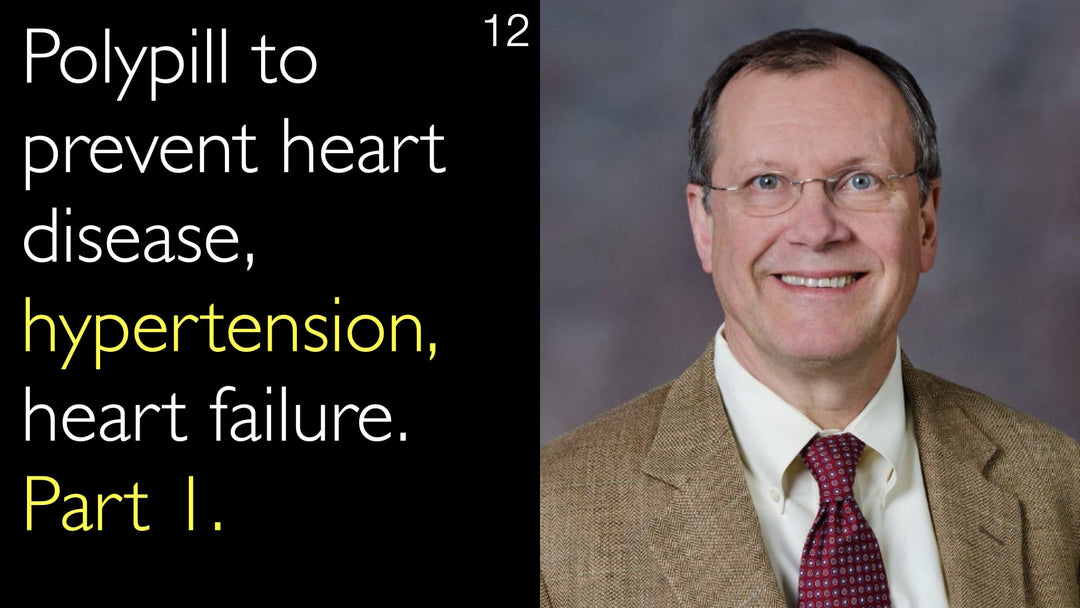最適な健康と疾患予防のための個別化栄養戦略
セクションへ移動
個別化栄養の理解
ピエール・マヌッチ医学博士は、個別化栄養を「個人の健康リスクや診断に基づいて食事を調整すること」と定義しています。臨床例として、初期の代謝症候群マーカーを持つ60歳患者を紹介。この患者は自発的に肉中心の食事から準菜食主義へ移行しました。マヌッチ博士は、こうした調整が効果的な一次予防になると指摘。個別化栄養は、意識的な食品選択を通じて遺伝的リスク要因に対処する手法です。
食品加工と組成の比較
マヌッチ博士は、食品加工がマクロ栄養素の含有量以上に健康リスクに影響すると論じています。加工過程での酸化により、もともと安全な成分から有害化合物が生じることを説明。アントン・チトフ医学博士との対談では、伝統的なヨーグルトなどの高脂肪天然食品が有益であることが示されました。マヌッチ博士は患者に対し、包装表示より食品そのものの由来に注目するよう助言。この考え方は、過度に加工された現代食品の落とし穴を避けるための指針となります。
地球規模の持続可能性課題
マヌッチ博士は、100億人に迫る人口増加の中で、個別化栄養と地球環境の健全性を結びつけています。ブラジル、インド、インドネシアでは、食料生産が森林破壊を加速させている現状を指摘。農業拡大や畜産はアンモニア排出を通じて大気汚染に寄与しています。持続可能な栄養は、人間の健康と環境収容力のバランスが不可欠であり、この二つの視点は長期的な食料安全保障の核心です。
実践的な食事例
マヌッチ博士は地中海食を例に、健康的な脂肪摂取を説明。伝統的なギリシャやトルコのヨーグルトは、高脂肪でありながら有益な脂肪を含んでいます。これに対し、保存料や添加物入りの加工低脂肪品とは一線を画します。博士はチトフ博士に対し、パーム油そのものは有害ではなく、加工法や環境影響が問題となると述べ。これらの事例は、文化的食習慣がしばしば栄養学的知見と一致することを示しています。
健康と環境の統合
マヌッチ博士は、個人と地球の健康を統合した栄養アプローチを提唱。特定の食品カテゴリーを一律に悪者扱いするのではなく、最小加工の食品をバランスよく摂取することが持続可能な食事の基盤と説明。博士とチトフ博士の議論では、全体の食事の質が高ければ、時折の摂取はリスクが小さいと結論。この視点は、地球規模の食料システム課題を考慮しつつ、個人の健康を守る方策を示しています。
全文書き起こし
アントン・チトフ医学博士: 最近の総説で持続可能かつ個別化された栄養について論じられていますね。精密医療の一環である精密栄養についてお聞かせください。精密栄養、あるいは個別化栄養とは何ですか?また、世界の栄養をどう持続可能にすべきでしょうか?
ピエール・マヌッチ医学博士: 率直に言うと、精密栄養は少し流行語ですね。この用語は、この分野で発展してきたものですが、個別化栄養の方が分かりやすいでしょう。これは、病気やリスク因子を持つ人々が日常的に行うことです。私たちは皆、特に疾患リスクがある場合、栄養を調整します。健康な人でも自身のリスクに応じて食事を変える傾向があります。
具体例を挙げましょう。昨日、60歳の健康な患者を診ました。問題はありませんでしたが、代謝症候群のリスクを示す数値—高コレステロール、境界型の高尿酸血症、高血糖—がありました。つまり、代謝症候群の初期段階です。
この方は自ら問題を理解し、以前いた肉消費の多いイタリアの地域から、準菜食主義の食事に移行していました。これが個別化栄養の典型例です。「ほとんど完全な菜食主義者です」と言いつつ、時折魚を食べるなど例外はありました(これは良いことです)。自分で決断したことで、私がアドバイスする余地はほとんどありませんでした。加えて、毎日1万歩歩いています。これは、リスク因子を持つ人々における一次予防の効果的な例です。
リスクはおそらく遺伝的なもので、コレステロール値は食事より遺伝の影響が大きい。これが個別化栄養の現場です。この方は多くの野菜と果物を摂り、肉や加工食品を大幅に減らし、魚を多く食べる選択をしました。
これは単に精密または個別化栄養の話だけでなく、持続可能性の問題でもあります。地球は拡大を続け、すぐに100億人に達します。食料供給は非常に不安定になりつつあります。なぜなら、植物ベースの食品でさえ、森林破壊を伴うからです。これはブラジル、インド、中国、インドネシアで起きている問題です。中国では人々が学び、自国で植林を増やしていますが、ブラジルなどではそうなっていません。欧州諸国も同様で、おそらくロシアの一部でも問題となっているでしょう。
私が栄養学で学んだ重要な点は、食品の組成自体—炭水化物、糖質、脂肪、タンパク質—が問題なのではなく、加工のされ方にあります。炭水化物は、糖質として急速に血糖値を上げる高GI食品の場合にのみ危険です。野菜や果物の炭水化物は有害ではありません。ですから、スーパーの食品表示の組成だけを見るのは合理的ではありません。
重要なのは、何を食べるか—マクロ組成と、加工の有無です。加工によって、コレステロールや油の酸化が起こり、有害なフェノールや酸化生成物が生じるからです。健康的な食事とは、食品源に基づき、可能な限り加工食品を避け、過剰な肉消費を控えること。組成以上に、食品の性質、源、微量栄養素を見る必要があります。
具体例で説明しましょう。ギリシャやトルコでは、脂肪分の高いヨーグルトを多く食べます。高コレステロールなら良くないと思うかもしれませんが、実際はそうではありません。トルコのケフィアやアイランなどのヨーグルトは、高脂肪でも良い脂肪を含みます。一方、我が国の加工ヨーグルトは、低脂肪でも保存料が添加され、高度に加工されています。高脂肪の伝統的ヨーグルトは、糖尿病や高コレステロール、代謝症候群の人にも安全であることが示されています。
同様に、脂肪、バター、パーム油自体は危険ではありません。問題は加工方法と環境影響です。パーム油は、インドネシアでの森林破壊が問題ですが、油そのものは良い植物油です。オリーブオイルは優れていますが、特定の地域でしか育たず、世界人口を養うのは困難です。
繰り返しますが、重要なのは食品の加工法と提供のされ方です。ですから、組成より食品の源が最も重要です。
個別化栄養に関して、肉を完全に避けるべきではなく、他のタンパク源も考慮すべきです。肉も炭水化物も敵視すべきではなく、それらは食事の重要な要素です。問題は、加工と供給の方法、そして食品生産の持続可能性にあります。将来、地球が100億人になれば、食料不足は避けられません。これは気候変動問題と関連する大きな課題です。
例えば、畜産工場と大規模農業は、汚染源として見過ごされがちですが、アンモニアを排出し、汚染に寄与しています。PM2.5、オゾン、一酸化窒素などと同様、重要性は低いかもしれませんが、無視できません。
全体として、世界は統合システムであり、部門別ではなく統合的な視点から問題に取り組む必要があります。この分野の知識を深めることに熱意を燃やしています。
主なメッセージは、個別化栄養は集団のリスクに適用され、特定の「悪者」の食品は存在せず、食事はバランスが取れているべきということ。赤身肉の摂取には注意し、ティラミスのような高度加工食品や炭水化物は避けましょう。ただし、時折の摂取は問題ありません。以上が私の見解です。科学的でないかもしれませんが、この分野は私の関心である血栓症、ポリファーマシー、大気汚染と関連しています。好奇心旺盛な人間ですから。
アントン・チトフ医学博士: ありがとうございます。マヌッチ教授、お時間をいただき感謝します!


![パーソナライズド栄養学。本物の食品を適切に選ぶにはどうすればよいか?8. [第1部および第2部]](http://diagnosticdetectives.jp/cdn/shop/products/Dr_Pier-Mannuccio_Mannucci_thrombosis_bleeding_hematology_treatment_Diagnostic_Detectives_Network.009.jpg?v=1660905376&width=1080)
![パーソナライズド栄養学。本物の食品を適切に選ぶにはどうすればよいか?8. [第1部および第2部]](http://diagnosticdetectives.jp/cdn/shop/products/Dr_Pier-Mannuccio_Mannucci_thrombosis_bleeding_hematology_treatment_Diagnostic_Detectives_Network.009_d2434545-ae9c-4329-9e18-fd58e057bc7c.jpg?v=1660905388&width=1080)
![パーソナライズド栄養学。本物の食品を適切に選ぶにはどうすればよいか?8. [第1部および第2部]](http://diagnosticdetectives.jp/cdn/shop/products/Dr_Pier-Mannuccio_Mannucci_thrombosis_bleeding_hematology_treatment_Diagnostic_Detectives_Network.009.jpg?v=1660905376&width=720)
![パーソナライズド栄養学。本物の食品を適切に選ぶにはどうすればよいか?8. [第1部および第2部]](http://diagnosticdetectives.jp/cdn/shop/products/Dr_Pier-Mannuccio_Mannucci_thrombosis_bleeding_hematology_treatment_Diagnostic_Detectives_Network.009_d2434545-ae9c-4329-9e18-fd58e057bc7c.jpg?v=1660905388&width=720)





